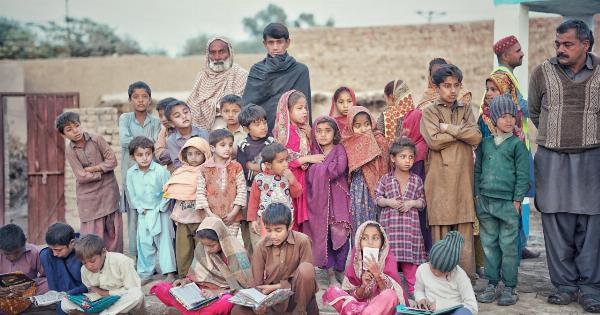Air pollution is a growing concern in modern society, with deteriorating air quality impacting various aspects of human health.
Children, in particular, are at a higher risk of experiencing detrimental effects due to their developing bodies and limited ability to protect themselves. This article examines the impact of air pollution on children’s development and highlights the need for urgent action to mitigate its adverse consequences.
The Hazards of Air Pollution
Air pollution refers to the presence of harmful substances in the air we breathe, such as particulate matter (PM), nitrogen dioxide (NO2), sulfur dioxide (SO2), and ozone (O3).
These pollutants are primarily generated from industrial emissions, vehicle exhaust, power plants, and other human activities. When children are exposed to high levels of air pollution, it can have severe consequences for their physical and cognitive development.
Respiratory Health Issues
One of the immediate consequences of air pollution on children’s health is respiratory problems. The inhalation of pollutants can lead to asthma, bronchitis, and other respiratory illnesses, which can have long-lasting effects.
Research has shown that children exposed to high levels of air pollution have an increased risk of developing asthma and experiencing more frequent and severe asthma attacks.
Impaired Cognitive Development
Air pollution has also been linked to impaired cognitive development in children.
Studies have found that exposure to pollutants like PM2.5 (fine particulate matter with a diameter of 2.5 micrometers or less) can negatively affect cognitive functions such as memory, attention, and learning abilities. These effects may persist into adulthood, impacting educational attainment and overall quality of life.
Neurological Disorders
Emerging evidence suggests that air pollution plays a role in the development of neurological disorders in children.
Prenatal exposure to pollutants has been associated with an increased risk of neurodevelopmental disorders like autism spectrum disorder (ASD) and attention deficit hyperactivity disorder (ADHD). Additionally, exposure to air pollution during childhood has been linked to cognitive impairments and behavioral problems.
Cardiovascular Complications
While primarily affecting the respiratory system, air pollution can also have detrimental effects on children’s cardiovascular health.
Studies have shown that exposure to pollutants like NO2 and PM2.5 can increase the risk of cardiovascular problems, including high blood pressure, heart disease, and stroke. These complications can manifest later in life, emphasizing the long-term impact of early exposure to air pollution.
Reduced Lung Function
Long-term exposure to air pollution can result in reduced lung function in children. The inhalation of pollutants can cause inflammation and damage to the airways, leading to decreased lung capacity.
Impaired lung function not only affects respiratory health but also limits physical activity, potentially hindering overall growth and development.
Allergies and Skin Conditions
Air pollution has also been associated with an increased prevalence of allergies and skin conditions in children. Pollutants can trigger allergic reactions, such as rhinitis and dermatitis, by sensitizing the immune system.
This can lead to chronic allergic conditions, ultimately impacting children’s quality of life and overall well-being.
Impact on Academic Performance
The detrimental effects of air pollution on children’s cognitive abilities can translate into academic difficulties.
Research has shown that exposure to pollutants like PM2.5 and NO2 is associated with decreased academic performance, including lower test scores and reduced educational attainment. These effects can contribute to educational inequalities and long-term socioeconomic implications.
Social and Emotional Consequences
Children exposed to air pollution may also experience social and emotional consequences. Chronic health issues resulting from pollution-related illnesses can lead to absenteeism from school, limited social interactions, and feelings of isolation.
Moreover, the stress and anxiety associated with living in polluted environments can impact children’s mental well-being and overall happiness.
Addressing the Issue
Given the severe detrimental effects of air pollution on children’s development, it is crucial to take immediate action to reduce pollution levels and protect their health.
This necessitates strong environmental regulations, promotion of clean energy sources, and the adoption of sustainable transportation options. Additionally, creating green spaces and implementing effective air quality monitoring systems can contribute to providing children with cleaner and healthier environments.
Conclusion
Air pollution poses significant risks to children’s development and overall well-being. From respiratory issues to impaired cognitive development and increased vulnerability to neurological disorders, the consequences are extensive and alarming.
Urgent measures are required to combat air pollution and ensure a healthier future for our children.





























